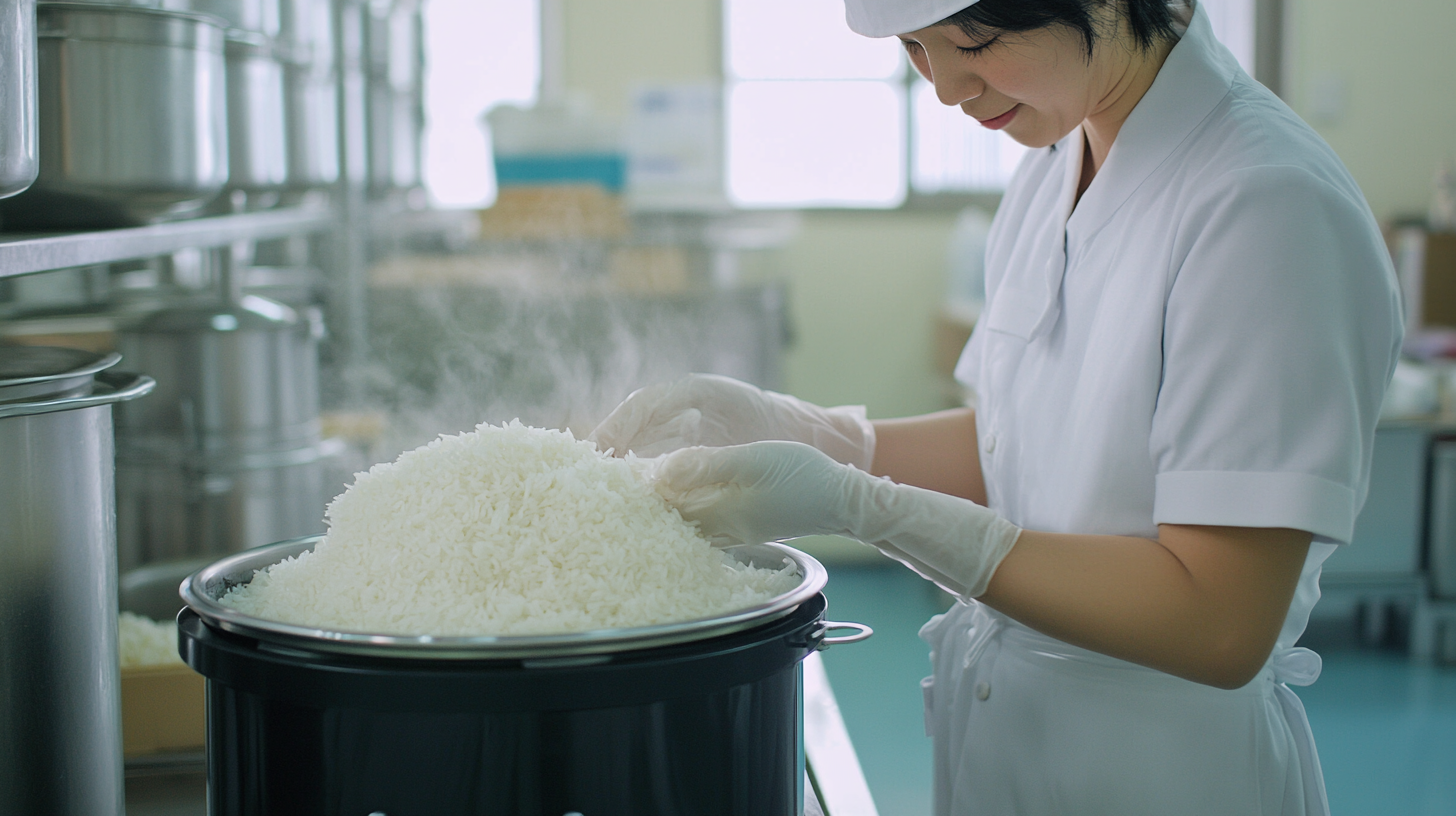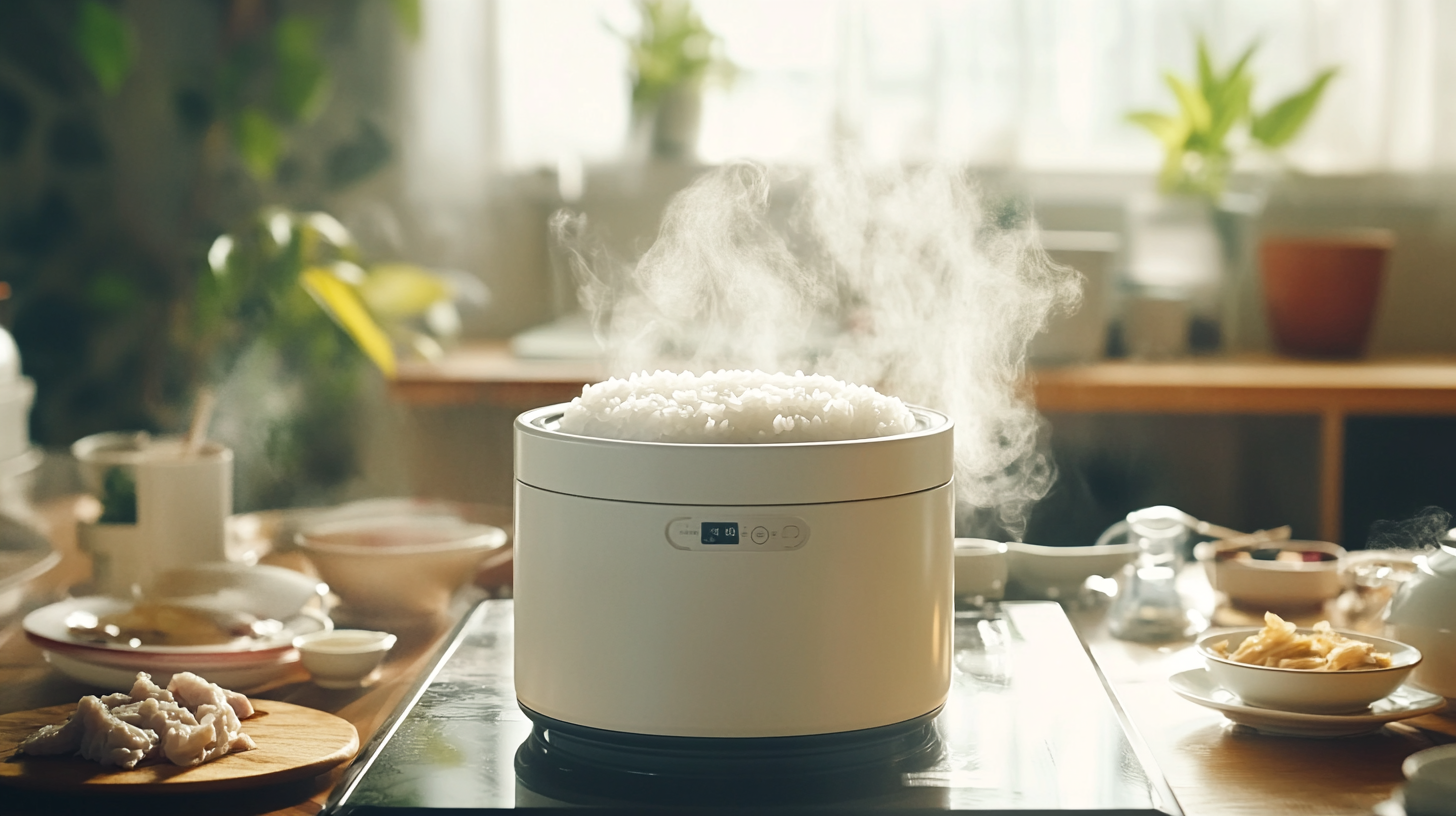- +86-13631182173
- sales@zsqeelin.com
- 8613631182173
As the demand for high-quality cooking appliances continues to rise, the market for rice cookers, particularly the Marukyo Rice Cooker, faces increasing scrutiny regarding production standards. According to a recent market research report by Technavio, the global rice cooker market is expected to grow by over 5% annually, driven by innovations in technology and consumer preferences for convenience. However, achieving consistent quality production standards poses significant challenges for manufacturers. Issues such as variability in raw materials, intricate assembly processes, and stringent safety regulations require meticulous attention to detail and robust quality control measures. With consumers becoming more discerning about the durability and performance of kitchen appliances, ensuring that every Marukyo Rice Cooker meets the highest standards is imperative for maintaining brand reputation and consumer trust. Balancing efficiency in production with the uncompromising demand for quality remains a critical focus for industry leaders moving forward.

Achieving quality production standards for Marukyo rice cookers requires a comprehensive understanding of critical quality metrics that define success in this competitive industry. According to a 2021 market research report by IBISWorld, consumer electronics, including rice cookers, have seen a growing emphasis on durability and energy efficiency, with 67% of consumers citing these attributes as vital in their purchasing decisions. Marukyo must prioritize these aspects while maintaining the traditional cooking performance that differentiates their products.
Moreover, industry standards established by the International Organization for Standardization (ISO) highlight the importance of safety, performance, and environmental impact in product development. The ISO 9001 certification, which emphasizes quality management systems, allows manufacturers to enhance customer satisfaction through consistent quality improvements. For Marukyo, ensuring that their rice cookers comply with these standards not only supports regulatory compliance but also fosters consumer trust and loyalty, ultimately impacting their market share in the global rice cooker segment. By aligning production processes with these quality benchmarks, Marukyo can navigate challenges and enhance their brand’s reputation effectively.
In the production of Marukyo rice cookers, several common manufacturing challenges can impede the achievement of quality production standards. One significant challenge is the consistency of materials used in the manufacturing process. Variations in the quality of rice cookers' components, such as heating elements and inner pots, can lead to inconsistencies in performance. Over time, even slight deviations can affect the cooker's reliability and longevity, resulting in customer dissatisfaction. Maintaining strict standards for material sourcing is essential to mitigate this issue.
Another challenge lies in the intricate assembly process. Marukyo rice cookers involve multiple components that must be assembled with precision to ensure optimal functionality. Manufacturing errors, such as misalignment or improper installation of parts, can lead to operational failures. Adequate training for assembly line workers and the implementation of quality control measures can help address these challenges. Additionally, the integration of advanced manufacturing technologies, such as robotics and automation, can enhance precision and reduce the likelihood of human error, ultimately contributing to higher production quality.

When it comes to producing high-quality Marukyo rice cookers, material selection plays a pivotal role. The choice of materials not only affects the cooker's aesthetic appeal but also its durability and efficiency. For instance, using high-grade stainless steel can enhance heat distribution and prevent rust, ensuring that the cooker performs optimally over time. On the other hand, cheaper materials may lead to uneven cooking and a shorter lifespan, negatively impacting user satisfaction and brand reputation.
To improve material selection, manufacturers should prioritize sourcing eco-friendly and heat-resistant materials. This not only contributes to sustainable practices but also aligns with consumer preferences for environmentally conscious products. Additionally, incorporating innovative insulation materials can enhance energy efficiency, allowing cooks to prepare perfect rice with minimal energy consumption.
**Tips:** When shopping for a rice cooker, pay attention to the material used in its construction. Opt for stainless steel or premium non-stick coatings for better performance. Moreover, ensure the cooker has a reputation for durability, which often relies on the quality of materials chosen during production.

Consumer feedback plays a pivotal role in the quality improvement of Marukyo rice cookers, directly influencing design and functionality. According to a report by the Consumer Technology Association, 75% of consumers believe that their feedback significantly impacts product enhancements. This data underscores the importance of actively listening to user insights, as many manufacturers, including Marukyo, look to refine their products based on real-world usage and expectations.
Furthermore, a recent survey conducted by Market Research Future indicated that 68% of rice cooker users cited ease of use and cooking efficiency as primary factors affecting their overall satisfaction. Marukyo has implemented various strategies to gather this critical feedback, from online reviews to post-purchase surveys, ultimately aiming to address common issues such as cooking anomalies and unreliable controls. By prioritizing consumer experiences, Marukyo not only strengthens its market position but also fosters a loyal customer base willing to advocate for their products.
This chart illustrates consumer feedback on key quality issues faced by Marukyo Rice Cookers over the past year. The data shows the rate of reported problems by consumers, highlighting areas for potential improvement.
Ensuring consistent quality in the production of Marukyo rice cookers requires a multifaceted approach that addresses both supply chain management and manufacturing processes. One of the primary strategies is the implementation of stringent supplier evaluation protocols. By working closely with trusted suppliers who adhere to high-quality standards, Marukyo can secure the best raw materials, which are crucial for producing reliable kitchen appliances. Regular audits and feedback loops with these suppliers also ensure that any quality issues are promptly addressed, fostering a culture of continuous improvement.
Another vital strategy involves the adoption of advanced manufacturing technologies. The integration of automation and smart manufacturing systems can significantly enhance precision and reduce variability in production. Utilizing real-time monitoring systems allows for immediate detection of defects, enabling on-the-spot corrections and minimizing waste. Furthermore, investing in employee training programs is essential to ensure that the workforce is skilled in both operating advanced machinery and maintaining quality control standards, leading to a more robust production process overall. By embracing these strategies, Marukyo can build a reputation for excellence in its rice cookers, meeting customer expectations consistently.
